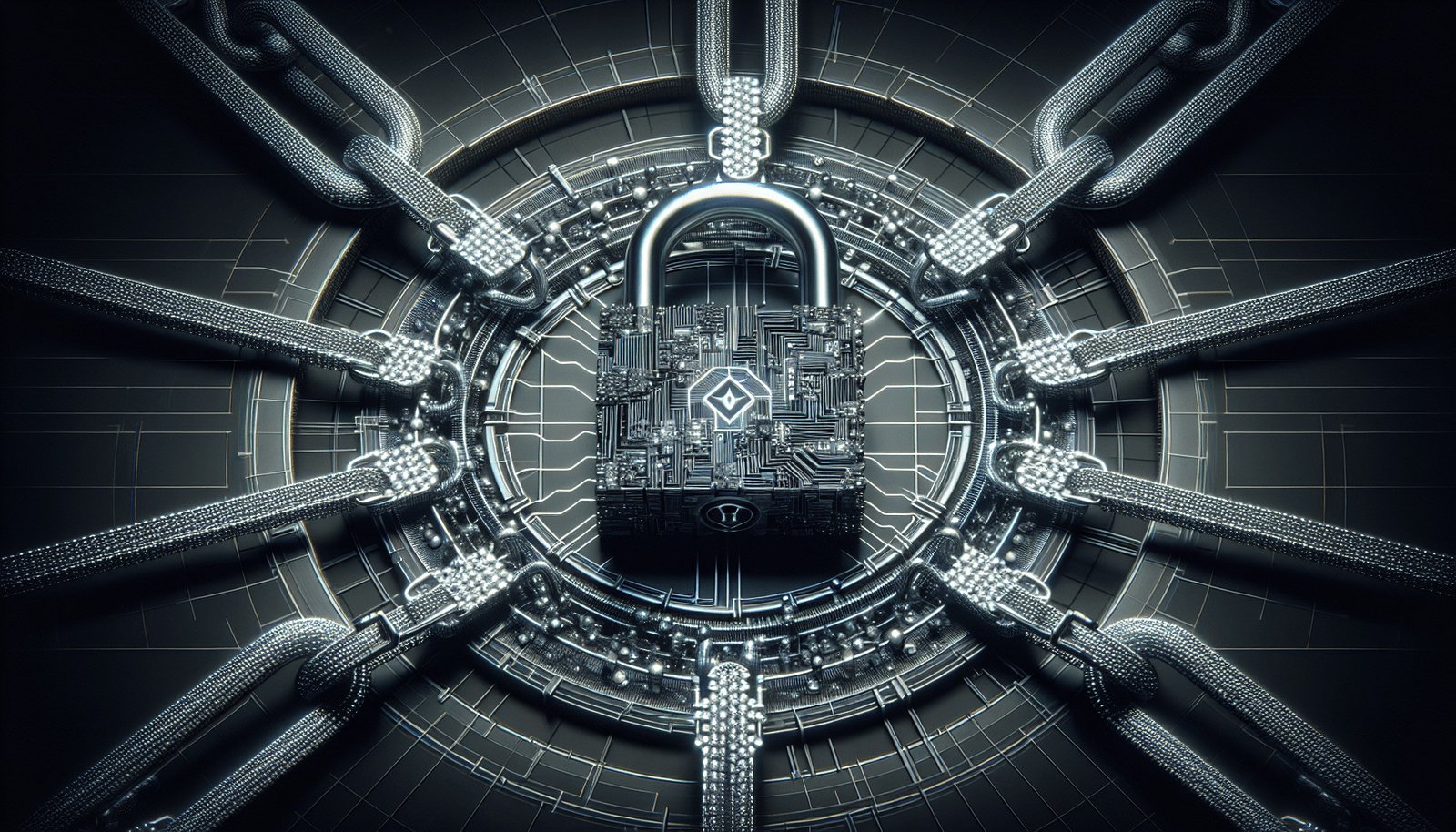Have you ever wondered how to evaluate the security of a crypto project? In a world where digital currencies are becoming increasingly prevalent, understanding the security measures behind these projects is crucial. Navigating the complexities of blockchain technology can be daunting, but ensuring that your investments are secure should always be a priority.
Let’s break down the key aspects you need to consider to effectively assess the security of a crypto project. By the end of this guide, you’ll have a comprehensive understanding, empowering you to make informed decisions and hopefully mitigate any potential risks involved with crypto investments.
Understanding the Basics of Crypto Security
Before diving deeper into the evaluation process, it’s fundamental to grasp the basics of crypto security. A robust security infrastructure is essential for any crypto project to protect users’ assets, ensure transaction integrity, and maintain the overall trustworthiness of the platform.
Why Crypto Security Matters
The growing popularity of cryptocurrencies has unfortunately made them a target for hackers. Poorly secured projects can lead to significant financial losses and personal data breaches. Security isn’t just an IT issue; it’s a critical component influencing a project’s success and longevity.
Key Concepts in Blockchain Security
Decentralization: The absence of a central authority in cryptocurrencies is a double-edged sword. While it provides transparency and reduces control by governing bodies, it also means security measures need to be more rigorous, as attackers might attempt to exploit this structure.
Consensus Mechanisms: These are foundational to validating transactions on a blockchain. Common mechanisms include Proof of Work (PoW) and Proof of Stake (PoS). Understanding these can provide insight into the project’s potential security vulnerabilities.
Evaluating the Project’s Whitepaper
A whitepaper is often the first detailed document you’ll encounter about a crypto project. While it serves as a promotional tool, it should also provide clear insights into the project’s technical foundation and security measures.
What to Look for in a Whitepaper
Transparency and Clarity: The document should clearly explain the project’s goals, technology, and security protocols without unnecessary jargon.
Technical Details: Check if the whitepaper includes comprehensive information about their technology, including consensus algorithms, smart contract functionality, and security protocols.
Risk Mitigation Strategies: The whitepaper should detail how the project intends to handle potential security threats and vulnerabilities.

Assessing the Development Team
The people behind a crypto project play a critical role in its security. A competent and transparent team is often a positive indicator of the project’s potential success and safety.
Evaluating the Team
Expertise and Experience: Investigate the credentials of the team members. Are they experienced in blockchain technology, security, and software development?
Public Profiles: Team members should have publicly accessible profiles, such as LinkedIn, showcasing their work history and accomplishments.
Involvement in Past Projects: Analyze their involvement in prior projects, especially those that have succeeded in maintaining high security standards.
Code Audit and Security Reviews
Code audits act as a security checkpoint, ensuring that the technology behind a crypto project adheres strictly to security protocols and practices.
Importance of Third-Party Audits
Objective Evaluation: An external audit ensures an unbiased review, catching potential flaws that internal developers may overlook.
Regular Audits: Projects should commit to regular audits, especially after updates or significant changes, to uphold security integrity.
Practical Steps for Code Evaluation
Access Audit Reports: Review audit reports published by credible third-party cyber security companies. These reports should detail the findings and recommendations.
Response to Audits: Observe how the project responds to audit findings. Are recommended changes implemented effectively?

Analyzing the Smart Contract Security
Smart contracts automate processes on blockchains, and their security is paramount.
Key Considerations
Code Quality: The smart contract code should be written robustly and adhere to standard security practices to prevent vulnerabilities.
Testing Protocols: Investigate the extent and rigor of the testing carried out pre-deployment, such as stress tests and simulations.
Upgradeable Contracts: Understand if the smart contracts allow for upgrades or changes post-deployment, which can be a double-edged sword if not managed judiciously.
Community Involvement and Transparency
A strong community and transparent communication are often indicators of a trustworthy crypto project.
Examining Community Engagement
Developer and Holder Interaction: Active and constructive dialogue between the development team and coin holders can foster a more secure and resilient project.
Community Feedback Mechanisms: A project should have established channels through which users can report bugs or security vulnerabilities.
Transparency Practices
Regular Updates: The team should provide consistent updates on development progress and security improvements.
Open Source Code: Projects that maintain open-source repositories allow the community to examine and spot potential security issues.

Risk Assessment and Threat Modeling
A structured risk assessment process and robust threat modeling are crucial tactics in crypto project security.
Developing Risk Awareness
Identifying Vulnerabilities: Thoroughly examine the project to identify any potential weaknesses within its ecosystem.
Prioritizing Security Flaws: Rank vulnerabilities to address the most critical threats first, based on the potential impact.
Threat Modeling Techniques
STRIDE Model: Used to identify types of threats within the design: Spoofing, Tampering, Repudiation, Information Disclosure, Denial of Service, and Elevation of Privilege.
DREAD Model: This model helps measure the threat level based on five categories: Damage, Reproducibility, Exploitability, Affected users, and Discoverability.
Regulatory Compliance and Legal Aspects
While a decentralized nature offers flexibility, compliance with regulations is still vital for ensuring security and trust.
Importance of Compliance
Jurisdiction and Regulation: Understand the legal frameworks in which the project operates. Compliance with local and international laws can reduce legal risks.
Licenses and Certifications: Examine if the project has necessary licenses or certifications signifying compliance with recognized security and operational standards.

Exploring the Technology Stack
The technology stack is the bedrock of any crypto project, influencing its security and performance.
Evaluating the Technology
Blockchain Utilized: Understand which blockchain the project is built upon. Different blockchains have varying levels of security, decentralization, and privacy.
Programming Language and Tools: Familiarity with the programming language and development tools used can indicate the overall reliability and security of the code.
Interoperability: Investigate how the project interacts with other blockchains, as these integrations need robust security to prevent vulnerabilities.
Monitoring and Incident Response Protocols
Despite all preventive measures, breaches can occur. How a project responds to incidents is critical.
Effective Monitoring Strategies
Continuous Monitoring: Employing sophisticated monitoring tools to detect anomalies or breaches can prevent significant losses.
Alert Mechanisms: Systems should be in place to promptly alert developers and stakeholders of potential security breaches.
Incident Response Plan
Preparedness: An established incident response plan detailing procedures, roles, and responsibilities is essential for swift action.
Post-Incident Analysis: Conduct post-mortem reviews to analyze incidents, learn from mistakes, and improve security measures.

Conclusion
Understanding how to evaluate the security of a crypto project necessitates a comprehensive approach, considering aspects like the team, technical setup, community engagement, and regulatory compliance. By developing a detailed understanding of these key areas, you can make more informed decisions about which crypto projects to invest in. Remember, a secure crypto project is not just about protecting digital assets—it’s about gaining trust and ensuring the project’s continued success.
